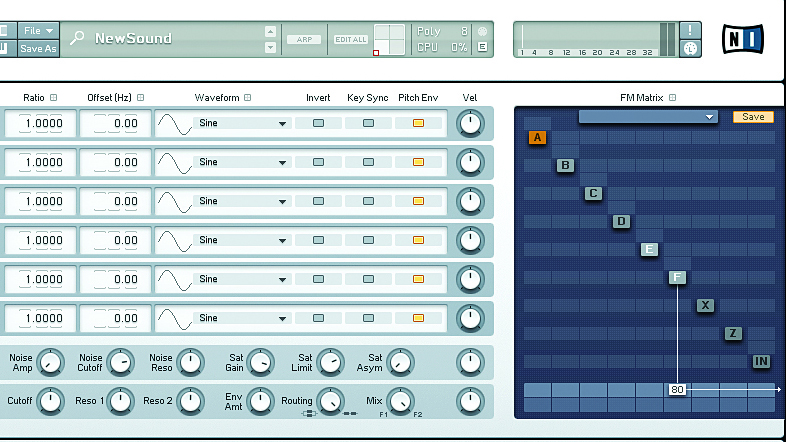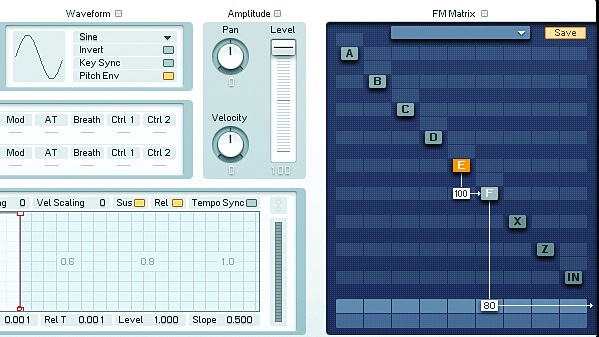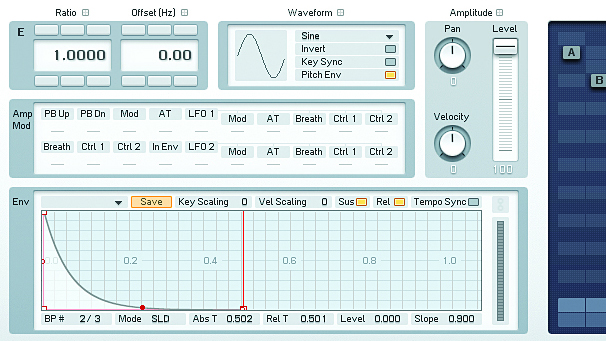How to program a percussive synth bass sound using an FM synth
Create a bass with frequency modulation
We can easily create a percussive bass sound with frequency modulation (FM) synthesis. Native Instruments’ FM8 is arguably the best FM synth plugin on the market, and if you don’t own it you can download the demo from Native Instruments.

Step 1: Load FM8 up on a MIDI track in your DAW.

Step 2: In the synth’s default state, a single operator is active, giving us a very simple sine wave tone. By modulating the active operator, we can add some energy in the harmonics above the fundamental frequency. Click the Expert button in the menu on the left to call up the modulation matrix. Right-click Operator E to activate it.

Step 3: Drag up in the box below Operator E to make it modulate Operator F. Turning it right up to 100 gives us something like a sawtooth wave. Now click Operator E to bring up its parameters. Rather than using filters to take the harmonics out, we’re using FM to add them.

Step 4: This gives us a different timbre, and FM is particularly useful for bass sounds thanks to its ability to create punchy, percussive transients. Drag the white square at the top right-hand corner of the envelope down to the bottom. This causes the level of Operator E to drop quickly. Now when you play a note you’ll hear a bass sound with a burst of harmonics at the start.

Step 5: We can change the timbre of the FM-generated harmonics by adjusting Operator E’s pitch. To do this, turn your attention to the Ratio at the top left-hand corner of the operator’s parameters. Drag up on it to set it to 2.00. This means that it plays at twice its original pitch. We can’t hear the output of this operator directly, but we can certainly hear the effect it has on Operator F.

Step 6: We’ve just created a harmonically rich bass tone that would be very much at home in deep house or melodic techno. You can adjust how strong the modulation is (and thus how obvious the harmonics are, and how punchy the bass is) by changing how much Operator E modulates Operator F. For example, a setting of 64 gives us a much more mellow sound.
Want all the hottest music and gear news, reviews, deals, features and more, direct to your inbox? Sign up here.
Computer Music magazine is the world’s best selling publication dedicated solely to making great music with your Mac or PC computer. Each issue it brings its lucky readers the best in cutting-edge tutorials, need-to-know, expert software reviews and even all the tools you actually need to make great music today, courtesy of our legendary CM Plugin Suite.
